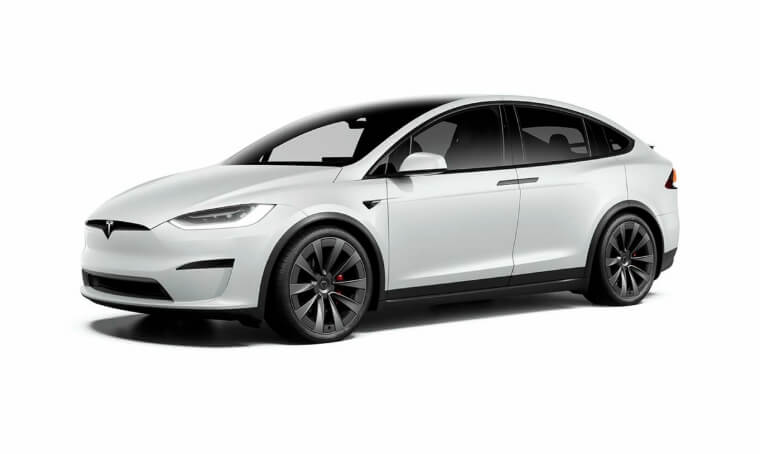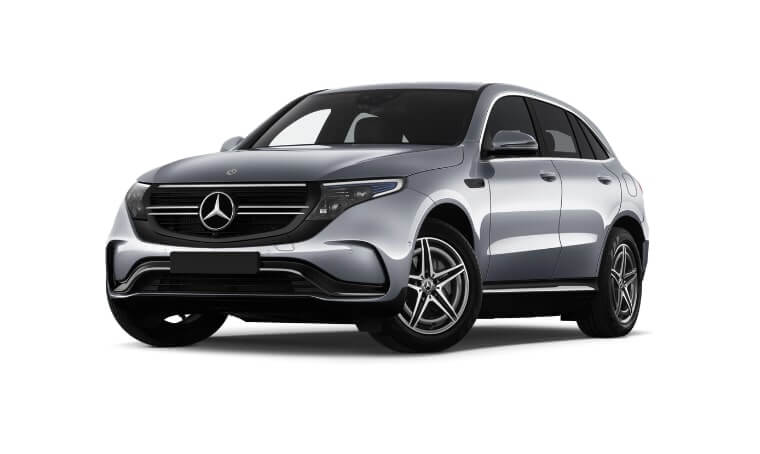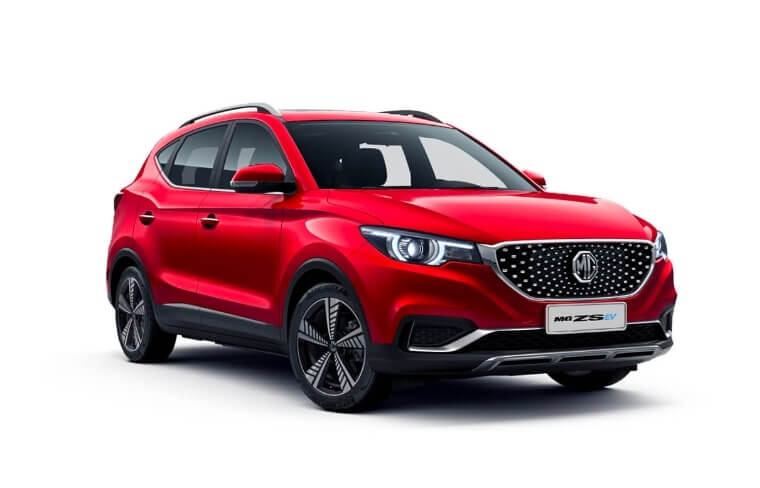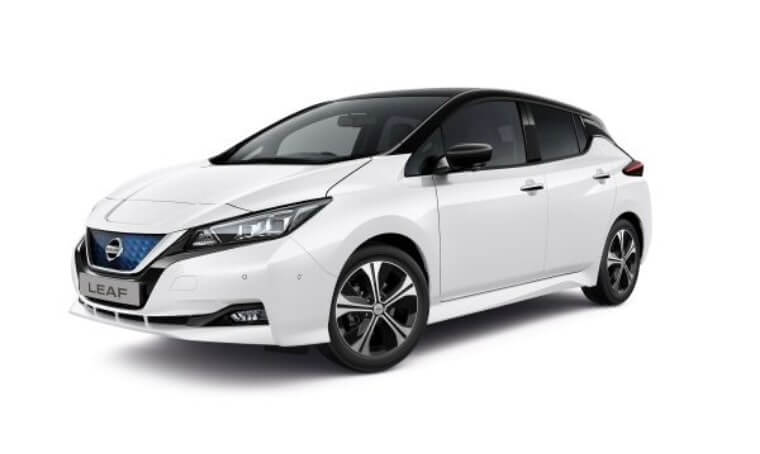Electric vehicles (EVs) are becoming an increasingly popular option amongst environmentally conscious drivers. The desire to protect our planet has arguably never been greater than during this period of mass uncertainty, sparked by the coronavirus pandemic. As such, more of us are turning to EVs as a viable step in the fight against global warming.
But how much can we say we really know about this form of transport? In this guide, we’re going to break down just what it means to drive an EV, while also taking a detailed look at the safety ratings and standards which determine their roadworthiness. If you’re thinking about going electric, but have no idea if it’s the right choice for you, this is the best place to start.
Electric vehicles aren’t quite the futuristic experiment they once were. There are now believed to be more than 10m cars on the road in the major markets alone, with these numbers set to rise further if trends from recent years continue.
Let’s take a closer look at just how the numbers translate, while also gaining a better understanding of the types of EVs available, and how they operate.
There is, without question, a steep rise in the number of people choosing to drive an EV in 2021. In fact, in the first quarter of the year alone, the amount of EVs registered has already exceeded the total figure the entirety of 2017 – as well as doubling in strength from Q1 of 2019.
It’s in China where most sales are happening, with reports showing a staggering 396,300 vehicles sold in that quarter alone. The figures look just as healthy across the rest of the globe, with numbers showing:

101,200 units

64,200 units

30,600 units

30,200 units

19,200 units

13,200 units

13,00 units

2,310 units
What’s more, the global market share for EVs has also shot up. At the end of 2020 they accounted for 3.1% of all automotive sales. In Q1 of 2021, they represented 4.1%.
When broken down by the type of vehicle (excluding cars), it’s interesting to note a large chunk of sales are made up of two and three-wheelers (such as bikes and scooters). The full figures show:
If the trends we’re witnessing now continue into the future, it’s expected the number of EVs on global roads will reach a staggering 145 million by the year 2030. With the ban on the sale of petrol and diesel engines set to come into effect that same year, drivers across the world are helping us take our first steps towards zero emission transport.
Just as with most things in life, driving an EV isn’t one-size-fits-all. There are a variety of different makes and models to choose from, as well as three individual types of vehicles. These core three classes all offer something different to drivers. They are:
Full electrics. As the name suggests, these are vehicles that run solely off the power of an electric battery – which is charged regularly to keep the car mobile. They are the cleanest form of travel on any road, as they have no tailpipes, and no CO2 or other pollutant emissions.
Plug-in hybrids. This type of vehicle combines the traditional use of a petrol or diesel combustion engine, with a small chargeable battery unit. The battery tends to go around 30 miles, with the fuel tank taking care of the rest. It must be said, most tanks in plug-in hybrids are designed to be very economical.
Hydrogen fuelled. This incredible type of vehicle sees high-pressured hydrogen combined with oxygen. Electricity is generated as a result of this chemical mash-up, which provides a vehicle with the means to move. The process produces no polluting elements, and so the only substance that needs to be expelled from an exhaust is water.
While we won’t pretend to know how to build a fully functional car, the basics of what makes an EV are easy enough for anyone to understand. It’s all a matter of generating, harnessing and then re-utilising electrical currents. Let’s take a closer look:
Auxiliary and charge port. If an electric vehicle had a heart, it would be its battery. This is where all the main auxiliary power is stored, ready to be pumped out to the rest of the vehicle. The charge ports are what give the battery the chance to accumulate this power in the first place. They allow for connection to external power sources to keep your vehicle topped-up.
Electric traction motor. This is, in essence, the muscles of your vehicle. Once it’s been supplied with power from the battery, the electric traction motor can begin to turn the wheels, propelling you forwards.
DC/DC convertor. This important device helps to keep an EV ticking over. It takes higher voltage DC power from the traction battery pack and converts it into the lower voltage DC power required to run accessories, as well as to help recharge the auxiliary battery.
Regenerative braking. When any kind of car brakes, the friction caused creates and wastes a fair amount of energy. Some EVs are fitted with a regenerative braking system, which means that instead of being lost, this energy is converted back into electricity to help charge your vehicle.
Now we know a little bit more about EVs as a concept, it’s time to discover how they’re assessed for safety.
Nobody should ever get behind the wheel of a vehicle which they aren’t confident is safe to drive. Thankfully, countries all across the world follow codes and practices which ensure that is very unlikely to happen. Let’s now get a better understanding of EV safety ratings, and how they translate across some of the world’s most popular brands.
Just as with a traditional combustion engine vehicle, EVs are subject to rigorous testing to ensure they’re roadworthy. Different regions of the world will have their own precise rating systems. Most often, a vehicle will be placed into one of six categories, depending on how they performed across a series of assessments:
But what about the tests themselves? There are a number carried out to determine which rating bracket a car is going to fall into. Some of the most common would be:
Frontal crash test. This sees a vehicle tested for its durability in a head-on collision. It is able to replicate the force and resistance met when crashing with both an oncoming vehicle and a stationary object (usually done at speeds of roughly 35mph). The head, back, chest and femur (leg) of test dummies are assessed for damage here.
Side barrier crash test. This assessment accounts for any side-on collisions you may have with another vehicle – such as at an intersection. It’s carried out by having a 3,000lb vehicle crashing at 38.5mph into a standing vehicle. The head, chest, abdomen and pelvis are all checked for damage in test dummies.
Side pole crash test. Tests of this nature are used to check if a collision with something like a telephone pole on the driver’s side of the vehicle is going to result in harm. The vehicle is angled at 75 degrees, then dragged at 20mph into a 25cm diameter pole. Injuries to the head, chest, spine, lower abdomen and pelvis are checked on test dummies.
Rollover resistance test. If you’re driving at speed and have to make a sudden or unexpected sharp turn, your car should be weighted so as to not flip over. In this test, the vehicle is usually moving at around 55mph at the time of the manoeuvre.
Source: NHTSA
Now that you know how an EV is tested for safety, it’s time to see where some of the most popular models on the road fit into the equation:

It’s probably no great shock to see the Tesla name feature here. The Model X is a large SUV which comes equipped with a variety of safety features. They include things like automatic emergency braking for pedestrians, an active bonnet to reduce damage in a front-on collision, and a specialist semi-autonomous autopilot system.
Euro NCAP ratings:
Adult protection
98%
Child Protection
81%
Road user Protection
72%
Safety assist
94%

This SUV is actually the first fully all-electric vehicle produced by the Mercedes brand. The time spent in development has clearly paid off, with the EQC receiving rave reviews for both driveability and safety. Top features include automatic collision avoidance, evasive steering assist, an automatic seat-belt tightening system if an impact is expected, and active speed limit assist.
Euro NCAP ratings:
Adult protection
96%
Child Protection
90%
Road user Protection
75%
Safety assist
75%

The MG name seemed to be in decline after their takeover by Nanjing Automobile in 2005. The ZS appears to buck that trend, however, with the classic company successfully dipping their toe into the world of EVs. This car comes with safety features like automatic emergency braking, speed limit assist, electronic stability control, and lane-keeping assistance.
Euro NCAP ratings:
Adult protection
90%
Child Protection
85%
Road user Protection
64%
Safety assist
70%

Seen as one of the most reliable, tried-and-tested EVs on the market, it’s perhaps no surprise the Nissan Leaf is rated highly for safety. The Leaf has intelligent emergency braking with pedestrian recognition, lane-keeping assist, steering assist in tight corners, and even blind spot warning systems.
Euro NCAP ratings:
Adult protection
93%
Child Protection
86%
Road user Protection
71%
Safety assist
71%
Always be sure to check the safety rating of any EV before you buy.
Keeping your EV running smoothly should always be a top priority. One of the best ways to do that is by ensuring its battery is kept in good condition – and, ideally, topped up. Charging an electric vehicle is one of the biggest question marks prospective drivers have.
Luckily, it’s a lot easier to wrap your head around than you might think. In essence, there are three different types of charging points:
Rapid charge – These points often get a vehicle to 80% capacity in under an hour
Fast charge – These tend to take (on average) 2 hours for a full charge
Slow charge – Slow charges can take up to 9 hours (and should be done overnight)
Naturally, the quicker the charge, the more expensive you can expect it to be. These points can be used either at home or on the go, to guarantee you always have some power in your vehicle.
If you own an EV, it makes sense to have a charging point installed at home. This gives you the freedom to charge at your own pace, while also benefiting from a number of safety features. These include factors like:
It’s important to check with the company installing your point what is and isn’t included. Installation costs will vary depending on the type and power of the point.
The installation process itself usually lasts around 3 hours. The charging point needs to be placed on an exterior wall or garage, near to where you intend to regularly park your car overnight. This gives you the opportunity to top up the battery while you sleep.
You’ll find accessible charging points in abundance these days, no matter where you are in the world. Often, there’ll be a variety of ways you can access one of these devices. They include:

Plug and play. This is the name given to free usage of charging points (such as at your place of work, or in specialist locations). These are very handy to use, but they do make it impossible to track usage data.

Contactless payments. Just as you might pay for fuel, you can charge your car up and then pay immediately with a debit or credit card. This is a speedy option if you’re in a rush, but it might incur a transaction fee.
Apps enabled. Log into an app and manage the charging of your car through it. Some apps will ask for immediate payment, while others might give you a certain window to pay up in. It’s also important to remember there will be a lot of different apps out there, so you may need to download a few over time.
Specialist cards. This is probably the least reliable means of paying. Specialist cards for certain charging networks sound good, but they’re restrictive. You’ll only be able to use the card at certain spots, and you won’t be able to charge at all if you don’t have the physical card with you at the time.
It makes sense when charging away from home to plan where and when you intend to stop and top up. This can save you a real headache with finances and app management.
While driving an EV won’t differ in too many ways from a regular car, there are still factors which need to be kept in mind if you’re looking to maximise your time on the road.
When dealing with something like an electrically powered battery, there are steps you can take to make the duration of a charge as efficient as possible. Just as you would with a smartphone or tablet, your EV’s battery can be managed by doing things to maximise efficiency. That includes stuff like:
Declutter the car. Take as much unnecessary bulk out of the car as possible. The heavier your car is, the more power it’s going to exert getting you from A to B. The less junk you have in your vehicle, the more efficient your range will be – reducing the need to constantly charge.
Monitor your speed. EVs use up power more quickly than traditional combustion engines when travelling above their optimum speed. And while petrol and diesel cars are able to counteract wind resistance (the main cause of drag, and therefore fuel depletion) with the use of gears, EVs do not have this benefit. Watch your speed to maximise your range.
Don’t brake too late. While regenerative braking techniques exist in a lot of EVs to recharge as you drive, it’s still encouraged to always try and brake to a halt at speeds of 10mph or less. The more smooth and steady your braking is, the more efficiently your car is able to transform this heat energy into reusable electricity.
Be conservative with heating and cooling. These systems can be a godsend in hot and cold periods of the year – but be sure to use them conservatively. These luxuries can extract an extra 10% of power from your battery whilst you’re driving. That means you effectively only get 90% of your charge for actual travel while they’re on.
Source: Energy Saving Trust
While having a quieter engine might sound ideal, in reality it actually poses something of an issue. The less sound a car makes, the more likely it is to cause an accidental collision with a pedestrian – who may not be able to hear the oncoming vehicle. In fact, one report even found that a pedestrian was 40% more likely to be hit by an EV or hybrid car than a standard vehicle.
The European Union would even go as far as to ensure there were rules in place which ensured all EVs emitted a sound of at least 56 decibels (about the same sound level as an electric toothbrush). For that reason, a lot of EVs need to be fitted with noise-emitting devices.
While some manufacturers now factor this into their designs when creating an EV, there are also a variety of third-party suppliers who have developed systems to combat the lack of noise:
Enhanced Vehicle Acoustics (EVA). This Silicon Valley-based company has developed a technology called “Vehicular Operations Sound Emitting Systems” (VOSES). It’s able to switch on and off depending on the speed of the vehicle, and sits in the wheel well. The sound is purposefully emitted in the direction the car is moving to reduce potential noise pollution.
SoundRacer EVS. This Swedish company uses actual recordings of real combustion engines to mimic the sound as an EV moves. Again, the speed of the vehicle will determine the volume and type of sound being emitted. In essence, SoundRacer have produced a cloaking device, which to the outside world gives the impression of a combustion engine.
Built-in devices. A lot of brands now make a point of including a noise-emitting device as part of their manufacturing process. Top names who have started implementing these kinds of systems include Ford, Nissan, Hyundai, Volkswagen and Toyota.
The move to electric is one that’s supported by governments all across the world. With that in mind, a lot of them have created schemes which promote the manufacturing and driving of EVs. Here are just some of the incentives out there to encourage this more sustainable form of travel.

Germany. A €4,000 purchase incentive sees both the government and the manufacturer contributing €2,000 each whenever someone purchases an EV. A tax bonus is also offered to drivers, operating at €200 per kilowatt-hour battery capacity (up to a maximum of €10,000).

Japan. Buyers will receive as much as 800,000 yen in subsidies, so long as the energy being used to power a car is generated from renewable sources. Plug-in hybrids receive half of this amount, with the subsidy capped at 400,000 yen.

Canada. The Canadian Government launched the Incentives for Zero-Emission Vehicles (iZEV) Program in May of 2019. This allows any citizens who purchase an EV to claim anywhere from $2,500-5,000 back when they register a vehicle. This is all part of a plan to make light-duty sales zero-emission by 2035.

UAE. Public charging points became free to use as of 2019, with an aim to have 42,000 EVs on the streets of the UAE by 2030. What’s more, any EV owner can apply for a Salik fee exemption (allowing them to bypass charges at toll gates), as well as receive a 15% discount on all car registration and renewal fees.

Norway. In this Scandinavian country (which is at the forefront of the EV revolution), taxation has been largely stripped away. EVs face no import taxes, and also receive relief from the 25% VAT charge which all other forms of motor vehicles are slapped with. This makes them incredibly affordable in comparison to traditional combustion engines.
Just as with anything technical, there are a lot of buzzwords which get thrown around when people talk about EVs. If you’re confused, here’s a breakdown of what some of the more common terms actually mean.
AC. Standing for “alternating current”. This is the name given to a charge that reverses direction at regular intervals.
BEV. This means a “battery electric vehicle”. It’s the name given to EVs which are 100% electric.
Charging point. The place where your EV can be plugged in and recharged.
Connector. This is the device attached to your vehicle which makes it possible for it to be charged.
DC. This stands for “direct current” – an electric current of constant direction, which can help to power your vehicle.
EREV. Extended range electric vehicle. These kinds of EVs will often include an internal combustion engine to power the battery.
FCEV. This is the name given to a vehicle that uses a fuel cell (such as hydrogen) to generate electricity.
HEV. This is the shorthand form of the name “hybrid electric vehicle”. These are the types of EVs which pair electric batteries with combustion engines.
Incentives. Many governments offer people tax reliefs and other bonuses if they decide to buy an EV. This is all part of larger plans to tackle climate change and global warming.
ICE. This is the name given to an “internal combustion engine”. Generally, that refers to something which is powered by either petrol or diesel.
KWH. Kilowatt-hour. This is a unit of energy equivalent to an hour’s worth of kilowatt power being expended.
Range. This is the term given to the distance you’ll be able to travel in an EV before it runs out of power and needs to be recharged.
Range anxiety. When you become nervous or agitated by the idea of your EV running out of power before you reach a charging point, it’s referred to as range anxiety.
Torque. This is the twisting rotation which can affect acceleration in cars. Maximum torque in an EV is achieved from zero revs – making them incredibly quick off the blocks.
Utility rate. This is the name given to the measurement used to charge someone who uses an EV. It is affected by the amount of energy used, as well as the time of day.
ZEV. This term refers to any electric vehicle which produces zero emissions. That means absolutely no tailpipe emissions which can be deemed harmful to the environment.
We’ve covered a lot in this guide, but there may still be more you’d like to learn about EVs and their safety standards. If that’s the case, be sure to check out our list of handy secondary sources. You may learn something new.